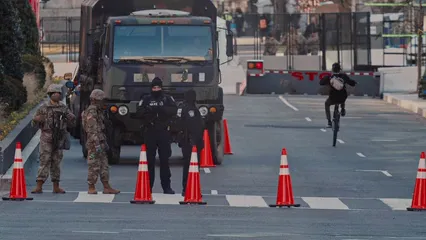Introduction
Newark, New Jersey, has long held a complicated relationship with crime. The city is often depicted as a battleground of sorts, where headlines scream about rising violent crime rates. However, a closer look reveals a more nuanced picture. Recent trends indicate a decline in certain violent crimes, even as property crimes have seen a spike. For residents, potential movers, and city planners, understanding these crime statistics is crucial. It helps them make informed decisions about safety, housing, and community initiatives.
Understanding crime statistics goes beyond just numbers; it’s about people, neighborhoods, and the overall wellbeing of a community. For those looking to relocate, it’s essential to grasp what these figures mean in terms of safety and lifestyle. Moreover, city planners can utilize this data to develop effective crime reduction strategies, ensuring Newark transforms into a safer place for all.
Various methodologies and sources contribute to these statistics. The FBI’s Uniform Crime Reporting (UCR) Program and the National Incident-Based Reporting System (NIBRS) are critical in compiling reliable crime data. These systems gather information from local law enforcement agencies, providing a comprehensive view of crime in Newark. By analyzing these figures, we can paint a clearer picture of the city’s crime landscape.
And while you’re delving into crime statistics, why not empower yourself with knowledge? Grab a copy of Crime Prevention: A Guide for Neighborhoods. It provides practical tips and strategies to enhance safety in your community while keeping you entertained with its engaging style!

Understanding Newark’s Crime Rate
Calculating crime rates often involves presenting the number of crimes per 1,000 residents. This method allows for fair comparisons between areas, regardless of population size. For Newark, the overall crime rate stands at approximately 24.41 per 1,000 residents, which is higher than many other cities across the nation.
Breaking this down further, we see a distinction between violent and property crime rates. Violent crimes, which include acts like murder, assault, and robbery, are often seen as more alarming due to their direct threat to personal safety. Newark’s violent crime rate is approximately 5.33 per 1,000 residents, significantly higher than the national average. In contrast, property crimes—such as burglary and theft—while still concerning, often evoke different responses from communities. Newark’s property crime rate is around 19.08 per 1,000 residents, indicating a substantial issue that affects many households.
Understanding key terminology is essential when discussing crime statistics. The UCR and NIBRS are two primary systems used for gathering data. The UCR focuses on aggregated data, while the NIBRS delivers detailed information about each crime incident, including the nature of the crime, victim, and offender demographics. This granularity allows for a better understanding of trends and patterns in crime data.
To further enhance your understanding of personal safety, consider reading The Complete Guide to Personal Safety. It covers essential strategies for staying safe in various situations and can be a valuable resource for anyone concerned about personal security.
In summary, Newark’s crime statistics reveal complexities that warrant careful consideration. By understanding how these rates are calculated and what they mean, residents can make informed decisions about their safety and well-being. As we move forward in this analysis, a deeper understanding of the specifics—like recent trends and neighborhood safety—will help provide a clearer picture of Newark’s crime landscape.

Newark Crime Statistics Overview
Recent Trends
The crime landscape in Newark has seen some interesting shifts in recent years. In 2023, the overall crime rate, calculated at approximately 24.41 incidents per 1,000 residents, still indicates challenges but also signs of improvement in specific areas. Compared to previous years, Newark’s crime statistics reveal a mixed bag of results. While property crimes have risen, violent crimes are generally on the decline.
Looking at the numbers, Newark reported 47 homicides in 2023, marking the lowest figure since 1960. This is a significant achievement for the city, as it shows concerted efforts to tackle violent crime. In contrast, the total number of violent crimes saw a 10% decrease compared to 2022, highlighting a positive trend in public safety.
Delving into specific figures, we find that assaults accounted for 1,002 reported cases. Meanwhile, robbery incidents totaled 482, and the number of rapes increased slightly to 90. On the property crime front, there were 5,827 reported incidents, which included 2,163 auto thefts—an area that has seen a dramatic increase in recent years due to various social factors.
To combat this rise in property crime, consider investing in a Home Security System Wireless. These systems provide peace of mind, allowing you to monitor your home remotely and receive alerts about potential intrusions.

Violent Crime Breakdown
Newark’s violent crime rate is notably high, with 5.33 incidents per 1,000 residents, which is above the national average. The violent crime spectrum includes various offenses such as murder, assault, and robbery.
In detail, the statistics for violent crimes in 2023 paint a somewhat alarming picture, yet with promising signs. Here’s how the numbers break down:
- Homicides: 47, the lowest number since 1960, which is a remarkable achievement in the fight against violent crime.
- Assaults: 1,002 cases reported, indicating ongoing concerns about personal safety.
- Rape: The number of reported rapes stands at 90, showing a slight uptick from previous years.
- Robberies: 482 cases were recorded, reflecting challenges in property-related violent offenses.
When considering the likelihood of becoming a victim of violent crime in Newark, the odds are approximately 1 in 188. While this statistic may seem daunting, it’s essential to recognize the community’s resilience and the proactive steps taken by law enforcement to improve safety.
In summary, while the numbers might initially evoke concern, the trends show a city actively working towards making Newark a safer place. Initiatives aimed at addressing the root causes of violence, combined with community engagement, play a crucial role in shaping a brighter future for Newark’s neighborhoods.

Property Crime Breakdown
Newark has seen a notable surge in property crimes, which raises eyebrows and concerns among residents. In 2023, the city reported a staggering 5,827 incidents of property crime. Let’s break that down, shall we?
Burglary accounts for 562 incidents, making it a significant issue. These thefts often leave victims feeling violated and anxious. But wait, there’s more! Motor vehicle theft has soared, with 2,163 reported cases. That’s a lot of missing cars, folks. If you own a vehicle in Newark, it might be wise to invest in a sturdy Steering Wheel Lock or a GPS Tracker for Vehicles. These tools can provide an extra layer of security and peace of mind.
So, what does this spike mean for community safety? Well, property crimes can create a sense of insecurity. Residents may feel unsafe leaving their homes or vehicles unattended. This anxiety can ripple through neighborhoods, affecting not just safety but also property values. After all, who wants to buy a home in a neighborhood where your car could vanish overnight?
While Newark has made strides in reducing violent crime, the rise in property crime reminds us that safety is a multifaceted issue. Addressing these concerns requires community involvement and effective policing strategies. Together, residents and law enforcement can work towards creating a safer environment for everyone.

Comparative Analysis: Newark vs. National Averages
Crime Rate Comparison
| Crime Type | Newark (per 1,000) | National Median (per 1,000) |
|————————-|————————-|———————————-|
| Violent Crime | 5.33 | 4 |
| Property Crime | 19.08 | 20 |
When stacking Newark’s crime rates against national averages, it’s clear the city has its share of challenges. Newark’s violent crime rate stands at 5.33 per 1,000 residents, surpassing the national median of 4, suggesting that residents face a higher risk of violent incidents.
However, when it comes to property crime, Newark’s rate is 19.08 per 1,000 residents, which is quite close to the national average of 20. This indicates that while property crime is a significant concern, it’s not dramatically worse than many other places across the country.
Comparing Newark to other New Jersey cities reveals that Newark’s crime rates are notably higher than many nearby towns. For instance, towns like Hoboken and Montclair boast lower crime rates, providing a stark contrast to Newark’s struggles.
In summary, while Newark is working tirelessly to improve its safety record, it’s essential to recognize its unique challenges. Understanding these statistics not only helps residents stay informed but also aids potential movers in making educated decisions about where to plant their roots.

Neighborhood Safety
Newark’s neighborhoods present a mixed bag when it comes to safety. Some areas shine like a diamond, while others resemble, well, a bit of coal. Based on recent crime statistics, the safest neighborhoods include spots like Forest Hill, Ironbound, and Seventh Avenue Southeast. These areas boast lower crime rates and a sense of community that makes residents feel more secure.
On the flip side, neighborhoods such as Springfield-Belmont and Dayton-Weequahic Park report significantly higher crime rates. Living in these areas may come with a sense of unease, affecting everything from outdoor activities to late-night grocery runs.
Neighborhood safety directly impacts quality of life. A safe environment encourages families to enjoy parks, children to play outside, and neighbors to engage with one another. On the contrary, high crime rates can lead to isolation and fear, ultimately driving property values down. If homes are perceived as more vulnerable, potential buyers might hesitate, impacting the housing market.
To further enhance your neighborhood’s safety, consider installing Smart Doorbell Camera. It provides real-time video feeds and alerts, ensuring you always know who’s at your door, adding an extra layer of security to your home.
In essence, understanding neighborhood safety isn’t just about spotting the trouble spots; it’s about recognizing how it shapes lives, communities, and investments in Newark.

Factors Influencing Crime Rates in Newark
Crime rates in Newark are influenced by several socio-economic factors that paint a broader picture of the city’s challenges. One of the most significant contributors is unemployment. High unemployment rates often lead to increased crime, as individuals may resort to illegal activities out of desperation. Newark’s unemployment rate hovers around 6.5%, significantly higher than the national average.
Additionally, poverty plays a crucial role. When families struggle to make ends meet, crime becomes a more attractive option for some. The connection between economic hardship and crime is well-documented and cannot be ignored.
But it’s not all doom and gloom! Newark has seen numerous community initiatives aimed at addressing these issues. Local organizations and government programs focus on providing job training, educational opportunities, and youth engagement to tackle the roots of crime. These initiatives create a more stable environment, reducing the likelihood of crime.
Policing strategies have also evolved. The Newark Police Department has implemented community policing methods, encouraging officers to build relationships with residents. This approach promotes trust and collaboration, making communities feel safer and more engaged. The effectiveness of community policing is evident, as it fosters communication and helps identify local needs.
Speaking of community efforts, have you considered creating a family emergency plan? Check out the Family Emergency Plan Booklet to guide you in preparing for unforeseen events. After all, being prepared is half the battle!
Crime prevention programs have shown promise, too. Initiatives like neighborhood watch groups, youth mentorship programs, and violence interruption efforts contribute to a decline in crime rates. In fact, 2023 statistics show a 10% decrease in violent crime compared to the previous year. This decline suggests that Newark’s proactive approach is yielding results.
In summary, crime rates in Newark are shaped by socio-economic factors, but the community’s response plays a pivotal role. By addressing underlying issues and enhancing policing strategies, Newark is moving toward a safer future, one initiative at a time.

Community Response and Safety Measures
Newark’s crime landscape is not just shaped by statistics; it’s also influenced by the vibrant community response and law enforcement strategies in place. Local law enforcement has adopted various strategies aimed at reducing crime and fostering community trust. One notable approach involves community policing, where officers engage directly with residents. This strategy encourages open communication and collaboration, allowing officers to better understand the unique needs of Newark neighborhoods.
Community organizations play a crucial role in crime prevention as well. They engage residents through programs focused on education, youth outreach, and violence prevention. Groups such as the Newark Collaborative help bridge the gap between law enforcement and the community. Their initiatives include mentorship programs and workshops that empower youth, steering them away from crime and toward positive life choices.
In recent years, Newark has seen a push for more collaborative efforts. The Office of Violence Prevention and Trauma Recovery has launched initiatives to address the root causes of violence. These programs target at-risk youth and promote peaceful conflict resolution. By treating violence as a public health issue, Newark is tackling crime with a holistic approach.
Residents and visitors should also prioritize personal safety. Here are some tips to keep in mind:
- Avoid walking alone at night, especially in less populated areas.
- Stay aware of your surroundings and trust your instincts. If something feels off, it probably is.
- Use well-lit streets and main roads instead of back alleys when traveling on foot.
- Consider investing in security systems or neighborhood watch groups to enhance safety.
- If you’re driving, avoid leaving your car running unattended, as auto thefts have increased in recent years.
For added security, think about a Personal Safety Alarm. These compact devices can emit a loud sound to deter attackers and alert others nearby, providing you with an extra layer of security.
These safety measures, combined with community efforts and law enforcement strategies, contribute to a safer Newark. Engaging with local initiatives can enhance the sense of security in the city, making it a more welcoming place for residents and visitors alike.

Conclusion
In summary, Newark’s crime statistics reveal a complex and evolving landscape. While the overall crime rate remains higher than the national average, recent trends indicate significant progress. With a 10% decrease in violent crime and the lowest homicide rate since 1960, the city is making strides towards a safer environment. However, property crimes, particularly auto thefts, have surged, highlighting ongoing challenges.
Community involvement is paramount in crime reduction efforts. Local organizations and law enforcement agencies are collaborating to create programs that address the roots of violence and crime. This multifaceted approach fosters a sense of unity and shared responsibility among residents.
For those living in or considering a move to Newark, staying informed and engaged with local safety initiatives is essential. By participating in community events and utilizing resources available, residents can contribute to a safer and more cohesive environment. Ultimately, building a safer Newark requires commitment from everyone—residents, community leaders, and law enforcement alike. Together, they can shape a future where safety and security are priorities for all.

FAQs
Understanding Newark’s crime statistics is vital for residents and city planners alike. newark crime statistics
Before you go, consider adding a First Aid Kit to your home. You never know when it might come in handy!
Please let us know what you think about our content by leaving a comment down below!
Thank you for reading till here 🙂
All images from Pexels




